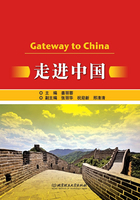
第一部分 语言篇 Language
一、汉语拼音 Chinese Pinyin(Phonetic System)
1.声母(23个)Initials(23)
b p m f
d t n l
g k h
j q x
zh ch sh r
z c s
(y)(w)
练习
b
ba, bai, ban, bang, bao, bei, ben, beng, bi, bian, biao, bie,bin, bing, bo, bu
p
pa, pai, pan, pang, pao, pei, pen, peng, pi, pian, piao, pie, pin, ping, po, pou, pu
m
ma, mai, man, mang, mao, mei, men, meng, mi, mian, miao, mie, min, ming, miu, mo, mou, mu
f
fa, fan, fang, fei, fen, feng, fo, fou, fu
d
da, dai, dan, dang, dao, de, dei, den, deng, di, dian, diao, die, ding, diu, dong, dou, du, duan, dui, dun, duo
t
ta, tai, tan, tang, tao, te, teng, ti, tian, tiao, tie, ting, tong, tou, tu, tuan, tui, tun, tuo
n
na, nai, nan, nang, nao, ne, nei, nen, neng, ni, nian, niang, niao, nie, nin, ning, niu, nong, nou, nu, nuo, nuan, nü, nüe
l
la, lai, lan, lang, lao, le, lei, leng, li, lia, lian, liang, liao, lie, lin, ling, liu, long, lou, lu, luo, luan, lun, lü, lüe
g
ga, gai, gan, gang, gao, ge, gei, gen, geng, gong, gou, gu, gua, guai, guan, guang, gui, gun, guo
k
ka, kai, kan, kang, kao, ke, kei, ken, keng, kong, kou, ku, kua, kuai, kuan, kuang, kui, kun, kuo
h
ha, hai, han, hang, hao, he, hei, hen, heng, hong, hou, hu,hua, huai, huan, huang, hui, hun, huo
j
ji, jia, jian, jiang, jiao, jie, jin, jing, jiong, jiu, ju, juan, jue, jun
q
qi, qia, qian, qiang, qiao, qie, qin, qing, qiong, qiu, qu, quan, que, qun
x
xi, xia, xian, xiang, xiao, xie, xin, xing, xiong, xiu, xu, xuan, xue, xun
zh
zha, zhan, zhang, zhao, zhai, zhe, zhen, zheng, zhei, zhi, zhong, zhou, zhu, zhua, zhuo, zhuai, zhui, zhuan, zhuang, zhun
ch
cha, chai, chan, chang, chao, che, chen, cheng, chi, chong, chou, chu, chua, chuo, chuai, chui, chuan, chuang, chun
sh
sha, shan, shang, shai, shao, she, shen, sheng, shei, shi, shong, shou, shu, shua, shuo, shuai, shui, shuan, shuang, shun
r
ran, rang, rao, re, ren, reng, ri, rong, rou, ru, ruan, rui, run, ruo
z
za, zai, zan, zang, zao, ze, zei, zen, zeng, zi, zong, zou, zu, zuan, zui, zun, zuo
c
ca, cai, can, cang, cao, ce, cen, ceng, ci, cong, cou, cu, cuan, cui, cun, cuo
s
sa, sai, san, sang, sao, se, sei, sen, seng, si, song, sou,su, suan, sui, sun, suo
(y)
ya, yan, yang, yao, ye, yi, yin, ying, yong, you, yu, yuan, yue, yun
(w)
wa, wai, wan, wang, wei, wen, weng, wo, wu
2.韵母 Finals

3.汉语音节的构成 Structure of a Chinese Syllable
汉语普通话的一个音节通常由声调、声母、韵母三部分组成。其中声调有4个,声母21个,韵母30多个。
An SC(Standard Chinese)syllable is always composed of a tone, an initial and a final. There are 4 tones,21 initials and more than 30 finals in SC.

4.汉语的声调 Standard Chinese Lexical Tones
汉语普通话有4个声调。不同的声调加在同样的声韵组合上会形成不同的音节,表达不同的语义。
There are four lexical tones in SC. A syllable with the same initial and the same final will have different meanings in different tones.

5.汉语的变调 Chinese Tone Sandhi
变调是普通话中自然产生的一种声调变化现象,主要表现在“第三声”的变调、“一”的变调和“不”的变调。
Tone Sandhi is a phenomenon of tonal change that occurs naturally in Standard Chinese. It is mainly embodied in the tonal modification of the“third tone, ”“一”and“不.”
1)第二声变调规则
A rule for 2nd tone
当第二声的音节位于第一声和第二声的音节前,且其后跟其他声调的音节时,该第二声的音节变为第一声。
A 2nd tone preceded by a 1st or 2nd tone and followed by another tone becomes a 1st tone.
[1| 2] [2] [∗]⇒[1| 2] [1] [∗]
(此处的“|”表示“或者”, “∗”则表示任何声调)
(Here the“|”represents“or, ”and the“∗”represents any tone)
Examples:
三年级(third grade): sān niánjí⇒sān niānjí
谁来吃?(Who's coming to eat?): shéi lái chī?⇒shéi lāi chī?
特别难看(especially ugly): tèbié nánkàn⇒tèbié nānkàn
2)第三声变调规则
Rules for 3rd tone
(1)两个第三声连读,第一个三声变为二声。
A 3rd tone followed by another 3rd tone becomes a 2nd tone.
当两个第三声的音节连读时,第一个三声的音节变为第二声。如果三个或者更多第三声的音节连读,除了最后一个音节不变调,其他的音节全部需要变调。
A third tone followed by another third tone changes to the second tone. If there are three or more third tones in a row, change every other third tone before the last.
[3] [3]⇒[2] [3]
Examples:
你好(hello): nǐhǎo⇒níhǎo
很远(very far): hěnyuǎn⇒hényuǎn
好久(a long time): hǎojiǔ⇒háojiǔ
(2)第三声的音节和其他非三声的音节连读时变为半三声。
A 3rd tone becomes a low tone if followed by any other tone.
当第三声的音节位于其他非三声的音节(第一声、第二声、第四声以及轻声)前时,第一个音节变为半三声,即声调下降后不再上升。
When followed by a first, second, fourth, or neutral tones, a third tone should change into a half third tone(that is, a tone that falls and does not rise).
[3] [! 3]⇒[low tone] [! 3]
(此处“! ”代表“非三声音节”)
(Here the“! ”represents“not”)
Examples:
考试(exam): kǎoshì⇒kao shì
语言(language): yǔyán⇒yu yán
马车(cart): mǎchē⇒ma chē
(此处斜体字的声调均为半三声。)(Italics is used to represent“low tone”)
3)“一”的变调规则
Rules for“yī”
(1)“一”单独使用时不变调。
“Yī”(meaning “one”)is pronounced in the first tone when it stands alone.
(2)“一”位于第四声的音节前变为二声。
It is pronounced in the 2nd tone when followed by a 4th tone.
[一] [4]⇒[一2] [4]
Examples:
一个(one …): yī gè⇒yí gè
一半(one half): yī bàn⇒yí bàn
一步(one step): yī bù⇒yí bù
(3)“一”在第一、二、三声的音节前变成四声。
It is pronounced in the 4th tone whenfollowed by a 1st, 2nd or 3rd tone.
[一] [1| 2| 3]⇒[一4] [1| 2| 3]
(此处“|”表示“或者”)
(Here the“|”represents“or”)
Examples:
一般(normally): yībān⇒yìbān
一直(continuously): yīzhí⇒yìzhí
一起(together): yīqǐ⇒yìqǐ
4)“不”的变调规则
Rules for“bù”
(1)“不”单独使用时以及当其在第一、二、三声的音节前时不变调。
Bù(meaning “no”)is pronounced in the 4th tone when it stands alone. It is also in the fourth tone when it precedes a first, second, or third tone.
(2)“不”在第四声的音节前变为二声。
It is pronounced in the 2nd tone when followed by a 4th tone
[不] [4]⇒[不2] [4]
Examples:
不是(is not): bù shì⇒bú shì
不会(will not, cannot): bù huì⇒bú huì
不错(not bad): bù cuò⇒bú cuò